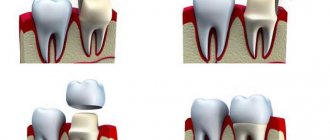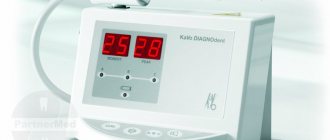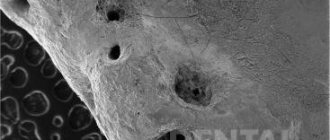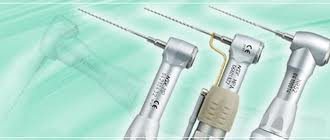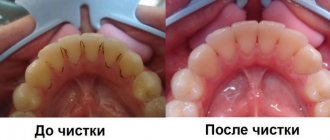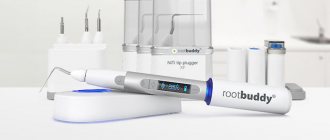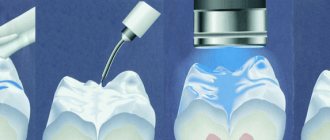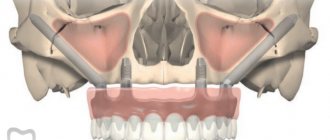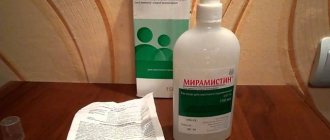Disinfection of instruments in dentistry is necessary to prevent infection of patients during medical procedures. Today there are two ways to clean devices from pathogenic microorganisms - chemical and thermal. Each of them is used for a specific type of instrument and allows you to maximally protect a person from infection of a wound or contraction of dangerous diseases.
Types of dental instruments that can be processed
The treatment includes instruments that come into contact with the patient’s saliva or blood during dental procedures. When preparing instruments for a specialist’s work, the following are subjected to disinfection:
- inspection kits – mirror, probe, tweezers and tray,
- devices used in the process of dental treatment - an excavator, smoothers, attachments for drills, devices for working in root canals, strips, strips for undermining fillings,
- periodontal instruments – curettes, scaler attachments,
- instruments used in orthopedics - burs for preparing units and removing crowns, trays for impressions, micrometers, spatulas,
- surgical devices - syringes for carpule anesthetics, forceps for tooth extraction, scalpels, elevators, needle holders, etc.,
- glassware – flasks, beakers and other containers used in laboratory conditions.
Any rubber products and materials for dressings are also subject to disinfection. The surface used for laying out working tools also needs careful processing.
Asepsis and antiseptics and their differences
People without medical education often confuse the concepts of asepsis and antiseptics, although they have completely different meanings. Asepsis is a set of measures aimed at preventing the entry of pathogenic microorganisms into wounds during dressings, operations and other manipulations.
The dentist's office regularly undergoes general cleaning, including washing and disinfecting all surfaces. Adhering to sanitary rules and regulations, specialists ensure asepsis in the office, which makes dental treatment as safe and successful as possible.
Antiseptics are a set of measures that are aimed at destroying microbes in a wound or body. Such disinfection measures include mechanical cleaning of pus, foci of necrosis, drainage, use of ultraviolet irradiation and laser, use of antibiotics, etc.
READ ALSO: How is mechanical teeth cleaning done in dentistry?
Concept of infection, disinfection, sterilization, antiseptics and asepsis
Infection (from Latin infectio - infection), the introduction and reproduction of pathogenic microorganisms in the human or animal body, accompanied by a complex of reactive processes.
The methods of prevention and control of infections are based on various methods of destroying pathogenic and opportunistic microbes. These methods include sterilization, disinfection and antiseptics. Disinfection, pre-sterilization cleaning and sterilization of medical devices are carried out in order to prevent nosocomial infections in patients and staff of medical institutions.
Disinfection is measures aimed at destroying or sharply suppressing the number of pathogenic and opportunistic microorganisms in the external environment, including on objects and products (L.B. Borisov, 2002). The purpose of disinfection is to prevent the transmission of pathogens from an infected person to an intact person through environmental objects.
The following disinfection methods are used: chemical, physical (boiling, ultraviolet irradiation, burning), mechanical (washing, washing, etc.), biological. In medical institutions, the chemical method is most often used, in which disinfectants are used. Halogen-containing substances (bleach, calcium hypochlorite, chloramines, dichlorocyanuric acid, etc.) are used as disinfectants; oxygen-containing compounds based on peroxides (pervomur, virkon, dezoxon, etc.); surfactants based on quaternary ammonium compounds (alaminol, veltolen, germosept, septodor, etc.); guanidines and their mixtures with surfactants (lysoformin, demos, catacept, etc.); alcohols; aldehydes (glutaric or succinic aldehyde); phenol-containing drugs (amocide, etc.).
All products must be disinfected after use. After disinfection, the products are washed with tap water, dried and used for their intended purpose or (if indicated) subjected to pre-sterilization cleaning and sterilization. Before sterilization, reusable products undergo pre-sterilization cleaning in order to remove protein, fat and mechanical contaminants, as well as drug residues, from the products.
Sterilization is the liberation of an object from microorganisms of all types, including spore forms, using physical and/or chemical methods. All products that come into contact with the wound surface, blood, injection solutions, as well as products that during operation come into contact with the mucous membrane and can cause damage are subject to sterilization. Types of sterilization:
Temperature treatment (heat sterilization):
• autoclaving (sterilization with water steam under pressure);
• dry heat (sterilization with hot air, 180°C for an hour, in Pasteur ovens - dry heat chambers; used for sterilization of glass and metal products);
• fractional sterilization with flowing steam (30 minutes at a temperature of 100°C, with several daily breaks to allow spores to germinate).
Chemical sterilization
: use formaldehyde, ethylene oxide, chloroform and other chemical factors.
Radiation sterilization:
• g-rays – in factories in the manufacture of disposable medical instruments;
• UV – in practical medicine.
Filtration (mechanical sterilization)
– when the solution cannot be heated.
For disinfection, pre-sterilization cleaning and sterilization, only physical and chemical means and methods approved by the Ministry of Health of the Republic of Belarus in the prescribed manner are used. When choosing products, you should take into account the recommendations of product manufacturers regarding the impact of specific products on the materials of these products (from among those permitted in the republic for this purpose). When carrying out disinfection, pre-sterilization cleaning and sterilization, it is allowed to use equipment (installations, washing machines, sterilizers, etc.) that are duly approved for industrial production and use in the Republic of Belarus.
In order to prevent the development of resistance of microorganisms circulating in medical institutions to disinfectants, it is recommended to periodically (at least quarterly) alternate preparations that contain different active ingredients, taking into account the sensitivity of the isolated cultures to disinfectants and antiseptics.
Disinfection, pre-sterilization cleaning and sterilization of complex products (endoscopes, medical instruments for flexible endoscopes, etc.), as well as specific information regarding various aspects of these types of processing of products, are carried out in accordance with official regulatory and methodological documents of the Ministry of Health of the Republic of Belarus, as well as regulatory documentation of the manufacturer products.
Antiseptics - suppression of the growth and reproduction of microbes on intact and damaged surfaces of the skin and mucous membrane. antiseptic chemicals are often used.
with a predominant bacterio- (microbo-)static effect. For antiseptics, solutions of oxygen-containing preparations based on peroxides, alcohols and other substances with disinfectant properties are used. The concentration of antiseptic solutions is significantly lower than when used as disinfectants.
Asepsis is the creation of a germ-free zone or a zone with a sharply reduced number of microorganisms in places:
• finding patients,
• carrying out medical procedures (surgeries, etc.),
• laboratory research.
It includes a set of direct (sterilization, disinfection, antiseptics) and indirect (separation measures, use of special clothing and shoes, gloves, bacterial air filter system) methods of influencing microorganisms.
Disinfection and its varieties
The purpose of disinfection is the destruction of pathogenic and opportunistic bacteria, viruses, fungi and their spores (it is possible that some spores may remain after the procedure). Disinfection of instruments is carried out immediately after their use. Rotary instruments are immersed in a disinfectant solution, the thickness of which above the instruments is at least 1 cm. Disinfectant solutions are prepared from concentrated chemical liquid and water. They use Decolex, Ventolen, ID-22, etc. The devices are processed within an hour.
The principles of disinfection differ depending on the equipment. There are three levels of disinfection:
- Short. The procedure uses substances based on alcohol, phenol or chlorine. They allow you to disinfect instruments that have been in contact with intact skin. Fungi and bacteria are not removed by these substances.
- High. For work, a mixture of 6 percent hydrogen peroxide, aldehyde and chlorine, as well as peracetic acid preparations, is used. They process instruments that come into contact with blood and are used to create injection solutions. The substances cope well with most types of pathogenic bacteria.
- Intermediate. The disinfection procedure removes large lipid bacteria and viruses. This is enough to disinfect instruments that were in contact with mucous membranes or used when working with lacerations.
antiseptics in dentistry
| Definition Antiseptics and disinfectants refer to antimicrobial agents that lack selectivity of antimicrobial action (they are active against most microorganisms, protozoa and fungi and do not cause the development of resistance). Antiseptics are used to destroy pathogens located on the surface of human tissue. They are applied to the skin and mucous membranes (including the gastrointestinal tract and urinary tract); in dentistry they are used to treat pathological periodontal pockets with periodontal disease, root canals and tooth cavities. The mechanism of action of most antiseptics is associated with their ability to denature proteins (structural and enzymatic) and thus have a bactericidal effect. Due to the lack of selectivity, antiseptics are organotropic in relation to the macroorganism). Classification and main representatives Antiseptics and disinfectants are classified according to their chemical structure: I. Halogen-containing compounds (derivatives of chlorine, iodine, etc.). Antiseptics of this group have a pronounced bactericidal, sporicidal, fungicidal and deodorizing effect. The most active drugs are those containing elemental halogens or releasing them (bleach solution, chloramine B, alcoholic iodine solution, Lugol's solution, iodinol, iodocam, iodoform, pantocid). II. Oxidizing agents (potassium permanganate, hydrogen peroxide solution, hydroperite). The principle of action of drugs in this group is the release of oxygen and oxidation of organic components of the protoplasm of microorganisms. They have a deodorizing effect. A solution of hydrogen peroxide helps to mechanically cleanse the wound and stop bleeding. III. Antiseptics of the phenol group (pure phenol, resorcinol, tricresol, ferozol, resorcinol, benzonaphthol, vagotil). Phenol has bactericidal, sporicidal and fungicidal effects. Irritates tissue, is easily absorbed from the site of application, toxic. It is used as an antiseptic in dentistry during root canal treatment and necrotization of the dental pulp. Vagotil has a local bactericidal and trichomonacid effect. Resorcinol is inferior to phenol as an antiseptic. In small concentrations it has a keratoplastic effect, and in large concentrations it has a keratolytic and cauterizing effect. The phenol group also includes eugenol (allylguaiacol), which is the main component of clove oil and has a disinfectant and local anesthetic effect. IV. Aliphatic antiseptics from the group of alcohols and aldehydes (formaldehyde solution, hexamethylenetetramine (methenamine), ethyl alcohol, beta-1-lysoform, cyminal). Formaldehyde preparations have antimicrobial, sporicidal, deodorizing, dehydrating and mummifying properties. They are used to treat skin during sweating, and in dentistry for necrotization and mummification of dental pulp. The antimicrobial activity of ethyl alcohol increases with increasing its concentration. It does not affect disputes. |
| Disinfectants for medical, children's and veterinary institutions.septustin.ru |
In dentistry, this group of drugs is used very widely. Antiseptics are used to treat the surface or cavities of the human body, disinfectants are used to treat external objects, instruments, impressions, dentures and their semi-finished products or patient secretions. The spectrum of action of antiseptics and disinfectants is wide and extends to bacteria, fungi, protozoa and some viruses. The mechanism of action may be associated with protein denaturation, disruption of the permeability of the plasma membrane, and inhibition of the activity of microbial enzymes. Halogen-containing antiseptics include iodine and chlorine preparations. In dentistry, iodine preparations (an alcohol solution of iodine with the addition of tannin and glycerin, potassium iodide, iodinol, iodoform, etc.) are used to treat the mucous membrane, treat and diagnose gum diseases, arthrosis of the temporomandibular joint, etc. Preparations containing iodine can cause irritation mucous membrane and allergization upon repeated use. The irritating effect is minimized with iodine preparations on an organic carrier (iodinol, povidone iodine). A highly effective antiseptic and disinfectant is a dichlorine-containing biguanide derivative - chlorhexidine, which has bicationic properties, does not have a damaging effect on tissues and is used in dentistry both as an independent drug (solution) and in the form of various combined dosage forms (rinses, toothpastes for therapeutic and prophylactic purposes , tablets for resorption in the oral cavity, etc.) for the treatment of ulcerative stomatitis, gingivitis, and the prevention of caries. From the group of oxidizing agents, hydrogen peroxide and potassium permanganate are used, which have an antiseptic, deodorizing and hemostatic effect due to the release of oxygen. From the group of aldehydes, formaldehyde (preparation of a resorcinol-formalin mixture for filling root canals, a disinfectant) and paraform (pastes for pulp devitalization) are used in dental practice. Formaldehyde has bactericidal, virucidal, funcidal and sporicidal effects. The acids are represented by boric acid and sodium tetraborate, which have a pronounced antimicrobial and antifungal effect (treatment of stomatitis, especially candidiasis). Among metal salts, silver nitrate is widely used (impregnation of difficult-to-pass channels). An extensive group of drugs in dentistry consists of phenols, which have diverse effects, including: local anesthetic, cauterizing and necrotizing (phenol or carbolic acid, vagotil), keratolytic and keratoplastic (resorcinol), astringent and deodorizing (thymol, biclotymol) effects. Phenol has the greatest potential toxicity in this series.
Dyes are represented by brilliant green, methylene blue and ethacridine lactate (treatment of skin and oral mucosa). Detergents (dimexide, miramistin) are used to treat periodontal diseases and oral mucosa, to prevent suppuration and purulent wounds. Ethyl and isoprylic alcohols (at a concentration of 60-90% by volume), which are used for disinfection, have bactericidal and virucidal properties.
| BETADINE Antiseptic drug. Solution for local and external use |
| HEXICON Antiseptic drug for external and local use. Gel for local and external use. Solution for external use |
| HEXORAL Antiseptic drug for topical use in ENT practice and dentistry. Aerosol for topical use 0.2%. Solution for topical use 0.1% |
| YOX A drug with antimicrobial and anti-inflammatory effects for local use in ENT practice. Solution for topical use. Topical spray |
| METROGYL DENTA For the treatment and prevention of infectious and inflammatory diseases of the oral cavity. Dental gel |
| SEPTOLETE NEO Antiseptic for topical use in ENT practice and dentistry. Pastilles |
| ELIGEL Antiseptic for local use in dentistry. Gel for gums |
When carrying out preventive measures, it is necessary to use antimicrobial drugs that affect both anaerobic and aerobic microflora. One of the most universally effective antiseptics is a biguanide derivative - chlorhexidine.
It is part of many therapeutic and prophylactic products, including toothpastes. Chlorhexidine causes a pronounced effect on gram-positive and gram-negative bacteria, fungi, facultative aerobes and anaerobes, herpes viruses, reducing the number of microorganisms in saliva that stimulate the formation of dental plaque by 80-90%.
The effect of chlorhexidine in relation to microorganisms is explained by the interaction between the positively charged molecule of the drug and negatively charged groups of molecules in the bacterial cell wall, which facilitates the penetration of the active component into the cytoplasm of the microorganism and its destruction.
Chlorhexidine is selectively adsorbed on the surface of hydroxyapatite tooth enamel, thereby preventing the adsorption of bacteria. In addition, binding to the protein structures of oral tissues causes a prolonged effect due to its gradual release. In addition to being bactericidal, chlorhexidine has a weak analgesic property. Long-term use of pastes with 2.2-0.4% chlorhexidine can lead to increased formation of tartar and oral dysbacteriosis.
These side effects are reduced in some formulations by the addition of chelating agents.
Recently, triclosan, a phenol with a broad antimicrobial effect, has been widely used. Effective against yeast fungi, gram-positive and gram-negative microorganisms, has a bacteriostatic or bactericidal effect due to the effect on the cytoplasmic membranes of bacteria, depending on the concentration. Compatible with other components of hygiene products, does not cause the formation of resistant microbial strains. As already indicated, along with the positive effect, the listed drugs can also have side effects on the tissues of the oral cavity, therefore their use as prophylactic agents should be monitored by specialists.
Antiseptic agents (most often chlorine-, phenol- or triclosan-containing) are included in such therapeutic and prophylactic pastes as Lacalut, Colgate, President, Aquafresh. Histerine, etc. In addition, these components, in various versions and in combination with herbal additives and fragrances, are also included in rinses.
"Elgidium" is an antibacterial toothpaste containing chlorhexidine digluconate and calcium carbonate. The effect of chlorhexidine is described above. Calcium helps reduce gum bleeding, neutralizes oral fluid when it becomes acidic and enhances the effect of chlorhexidine. The therapeutic effect of one cleansing with Elgidium lasts 24 hours, which is a clear advantage of this product.
One of the predisposing factors for the occurrence of an inflammatory reaction in the periodontium, with the same strength of the damaging effect of microflora, is a decrease in the effectiveness of antioxidant protection of tissues under the influence of various pathogenic influences of a general nature: stress, somatic diseases. Therefore, the use of correction of the relationship between the pro-oxidant and antioxidant systems of periodontal structures with the help of antioxidants is a pathogenetically justified effect.
From this point of view, Mexidol toothpaste (TK Pharmasoft LLC) deserves attention, containing the drug Mexidol, as well as a 5% Mexidol solution for rinsing. Of unconditional interest are the President line preparations, both pastes and rinses, the preventive effect of which is also due to their antioxidant effect due to plant extracts and, of course, the specific effect of triclosan.
President Active is a paste with controlled abrasiveness RDA 75. It contains: zinc citrate 0.75%; triclosan 0.35%; extracts of sanguinaria, hawthorn; sodium fluoride 0.32%. President Exclusive paste, which contains hexitidine 0.1%; thyme extract, propolis; monofluorophosphate 0.8%, sodium fluoride 0.1%. The mechanism of preventive action of Colgate pastes is similar: Colgate Propolis, containing propolis; "Colgate Medicinal Herbs", which includes a number of plant extracts: eucalyptus, tea tree, sage, myrrh and chamomile.
Source: https://meduniver.com/Medical/stomatologia/649.html MedUniver
Your login:
58cd01520f4b
Your password:
0e2bd534495b

